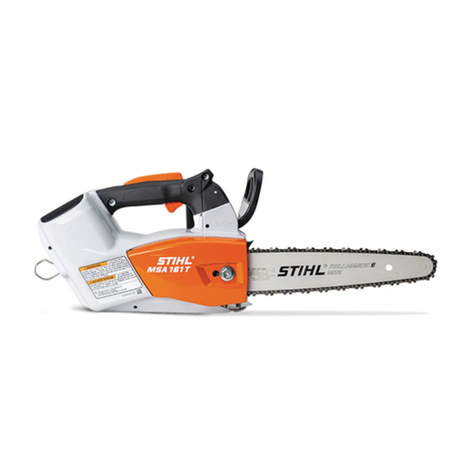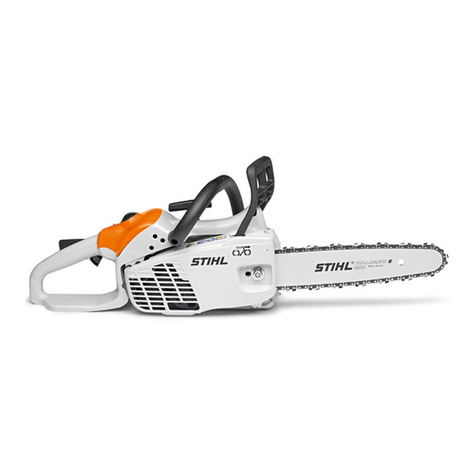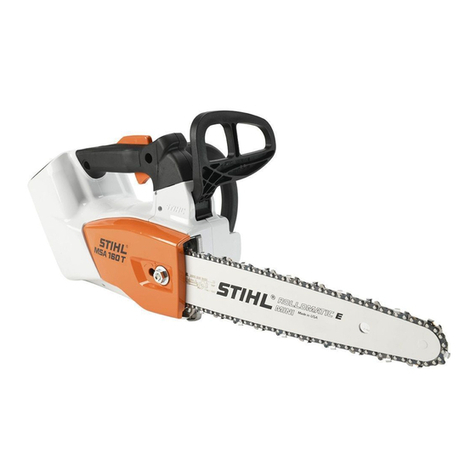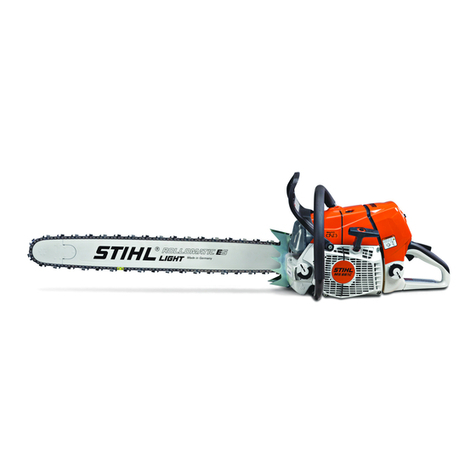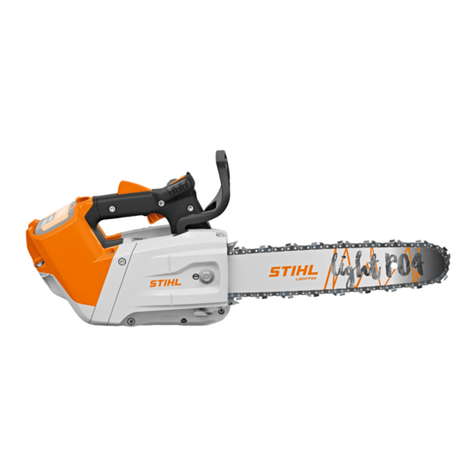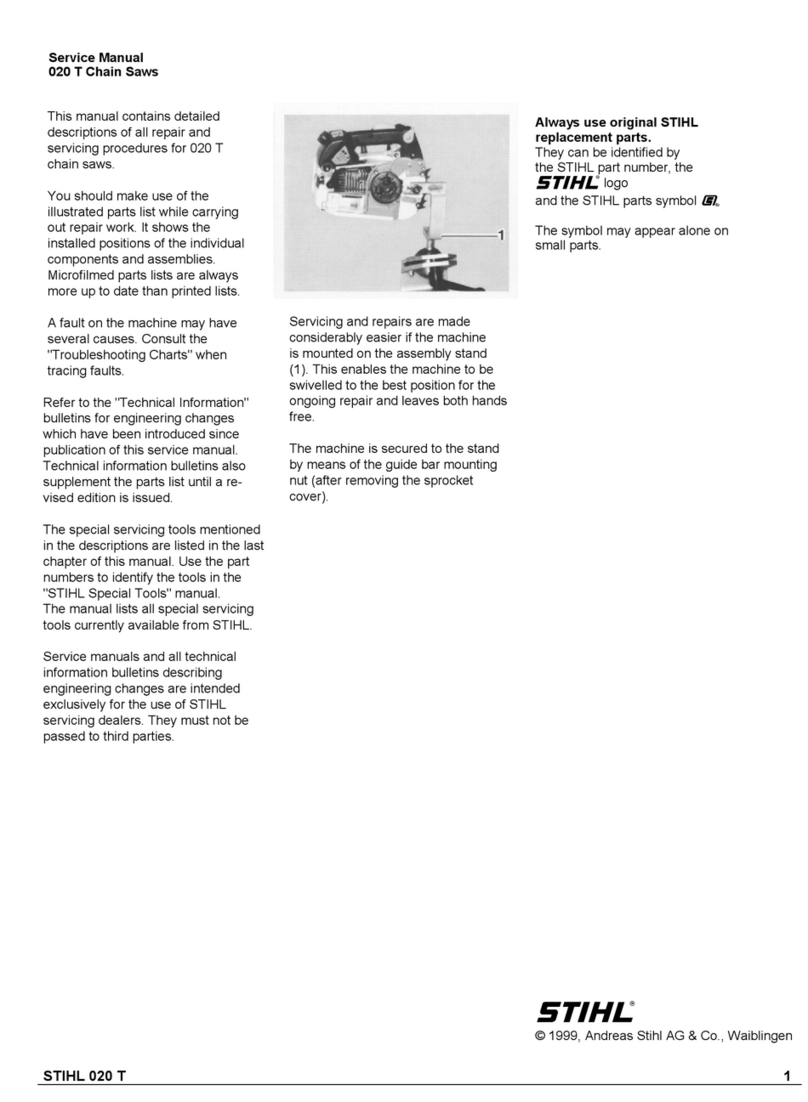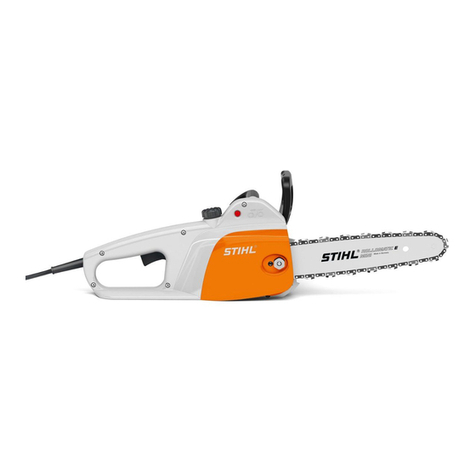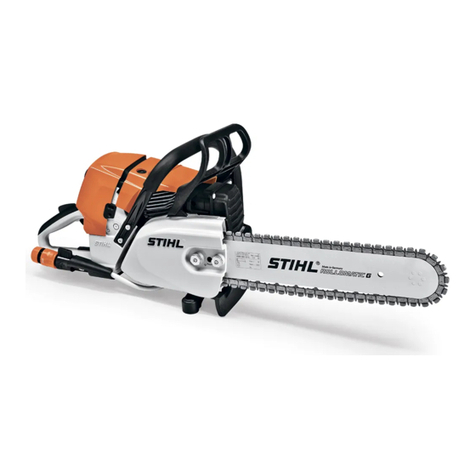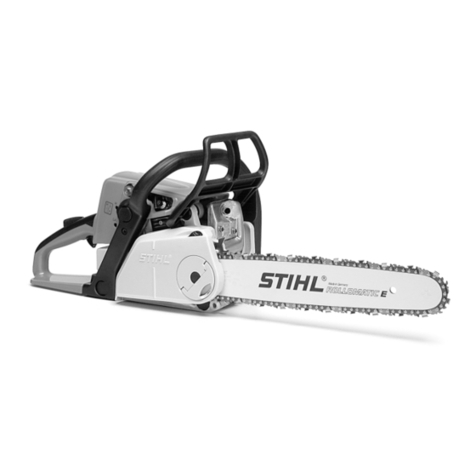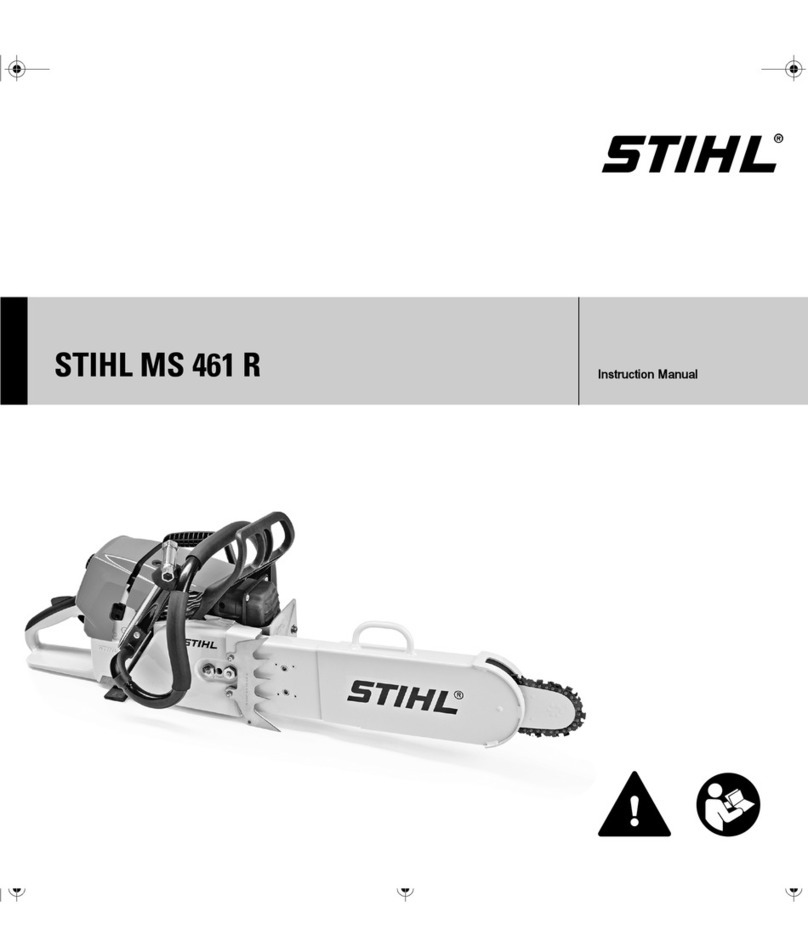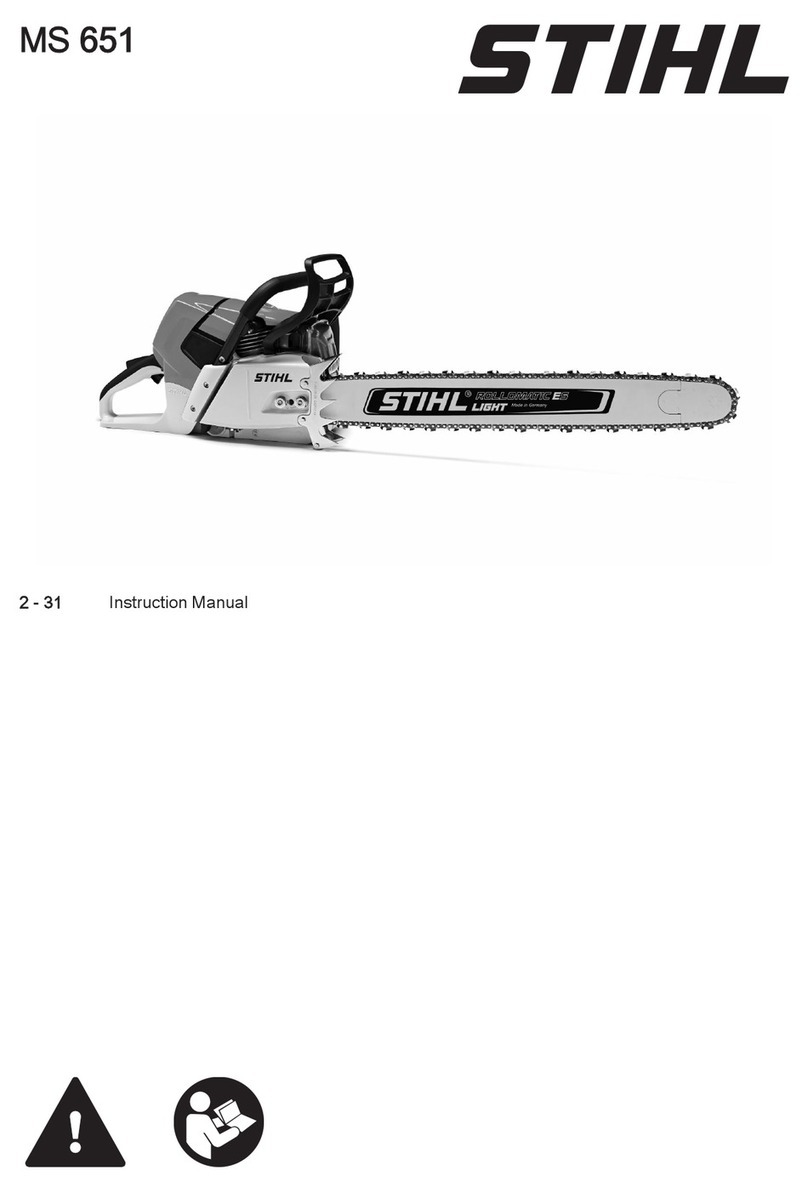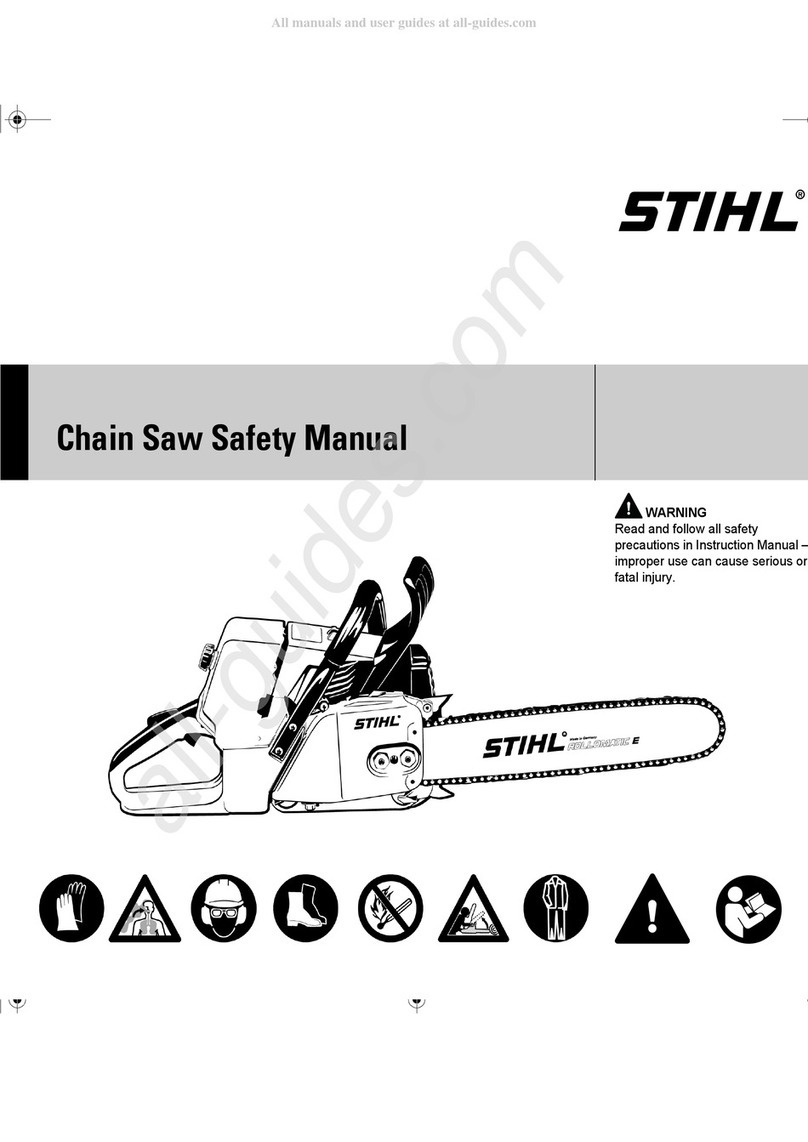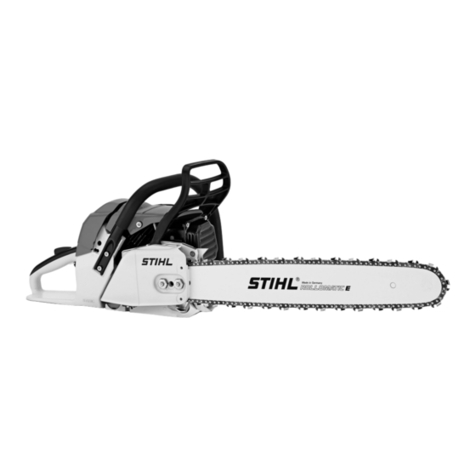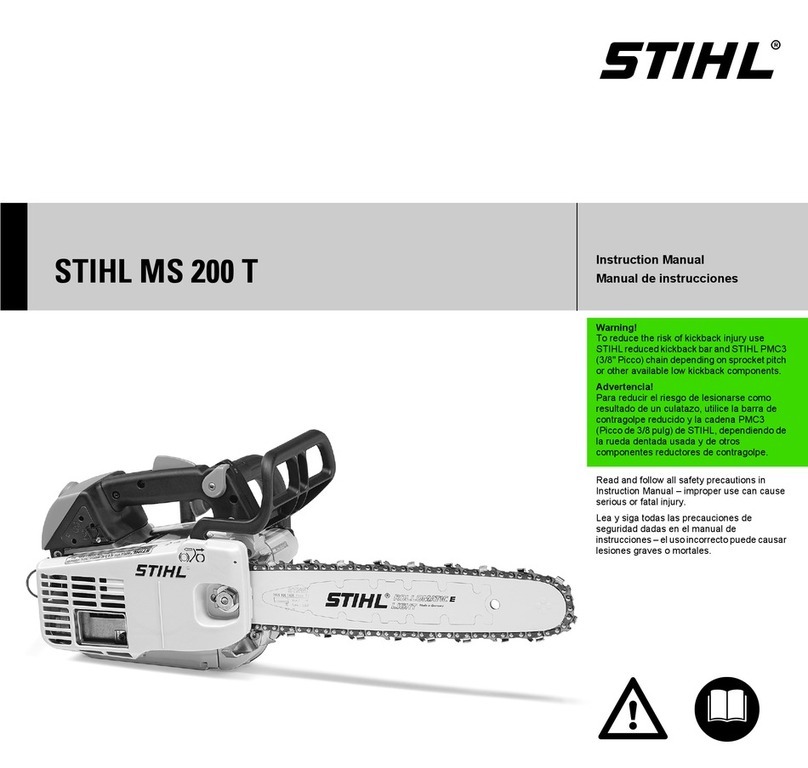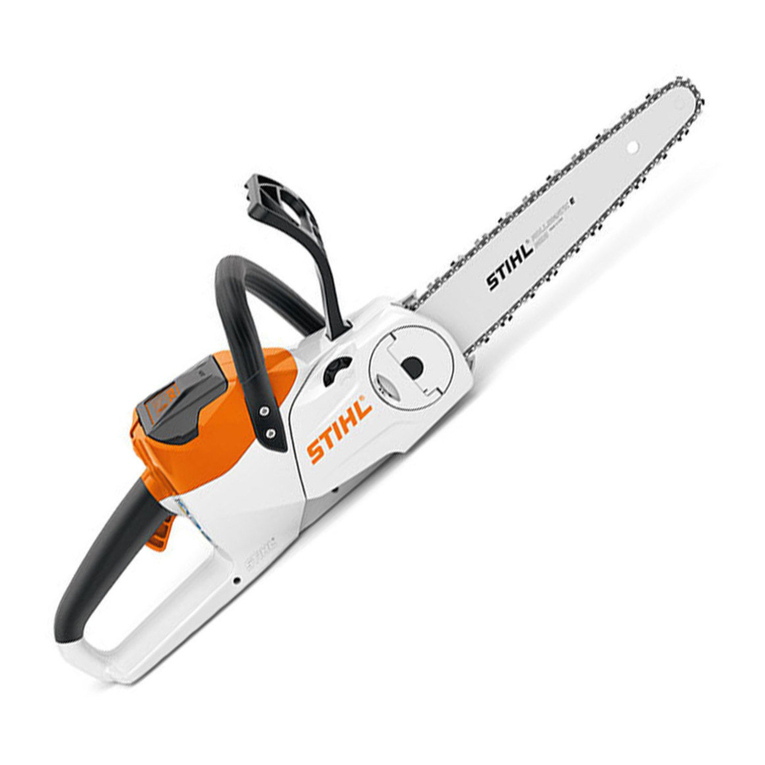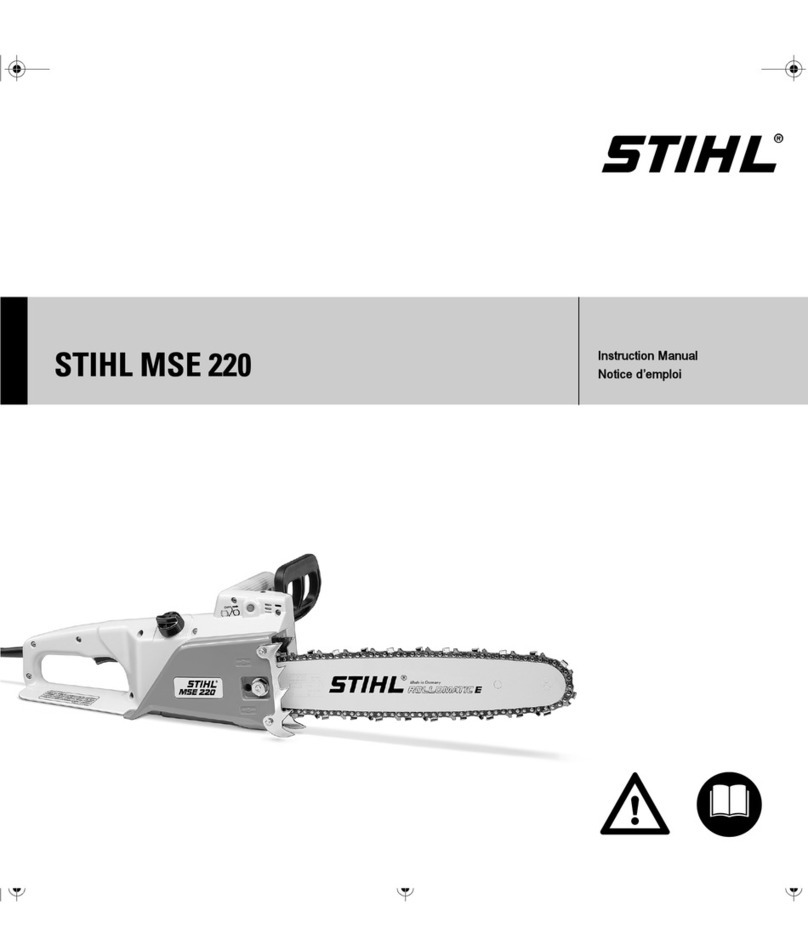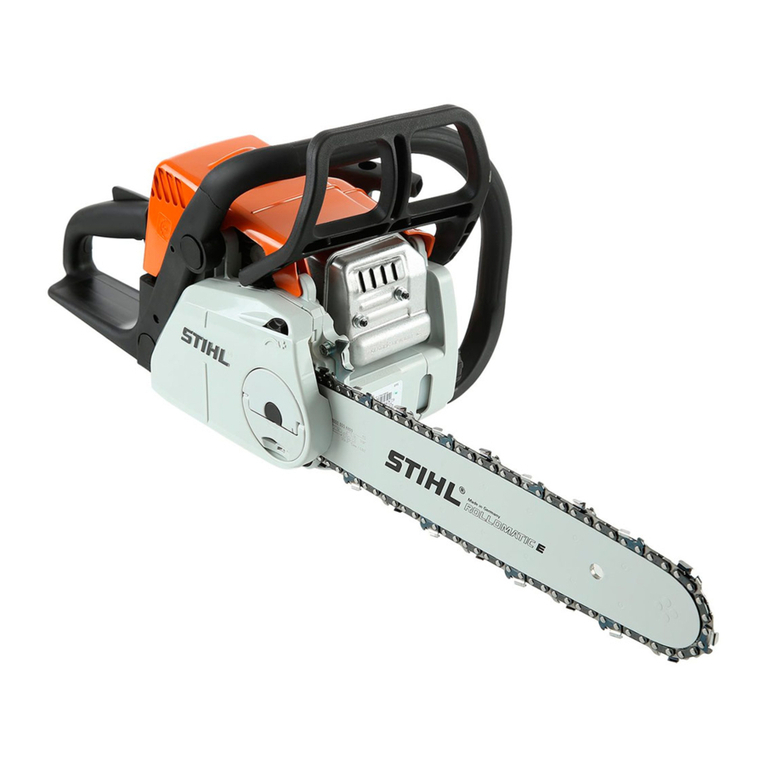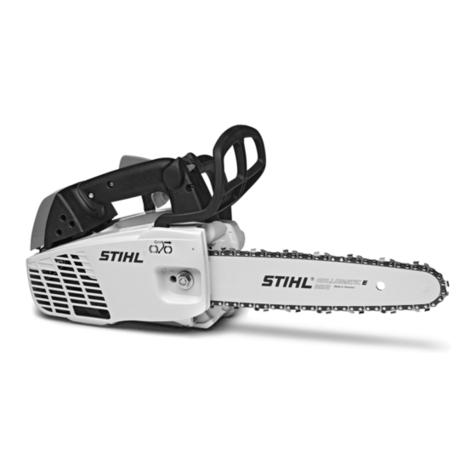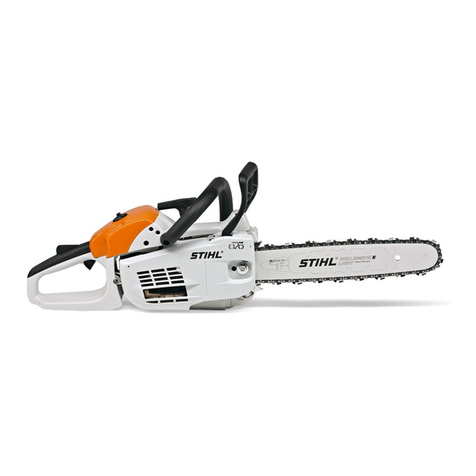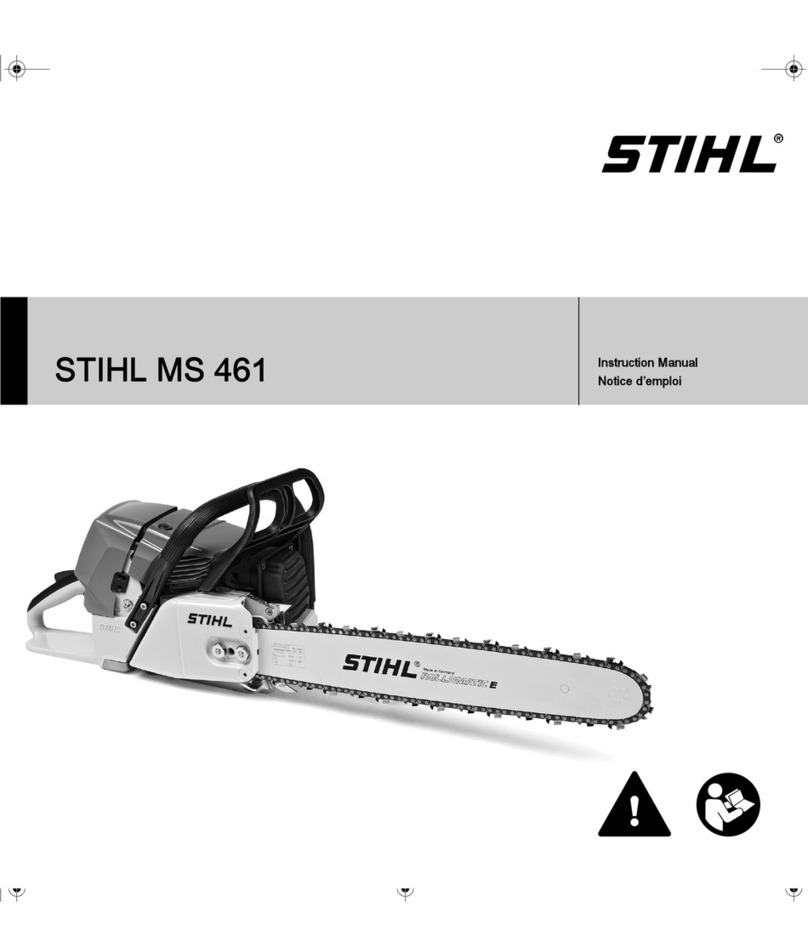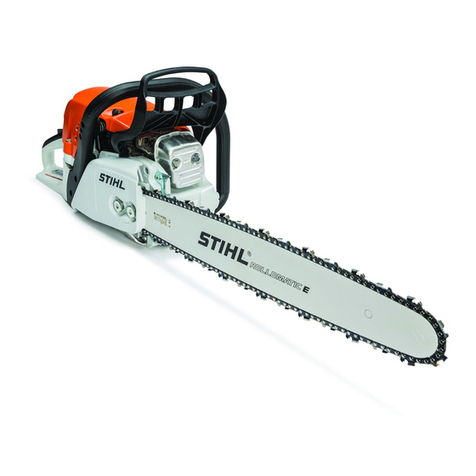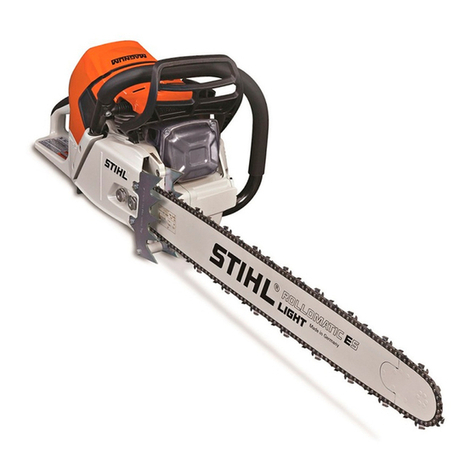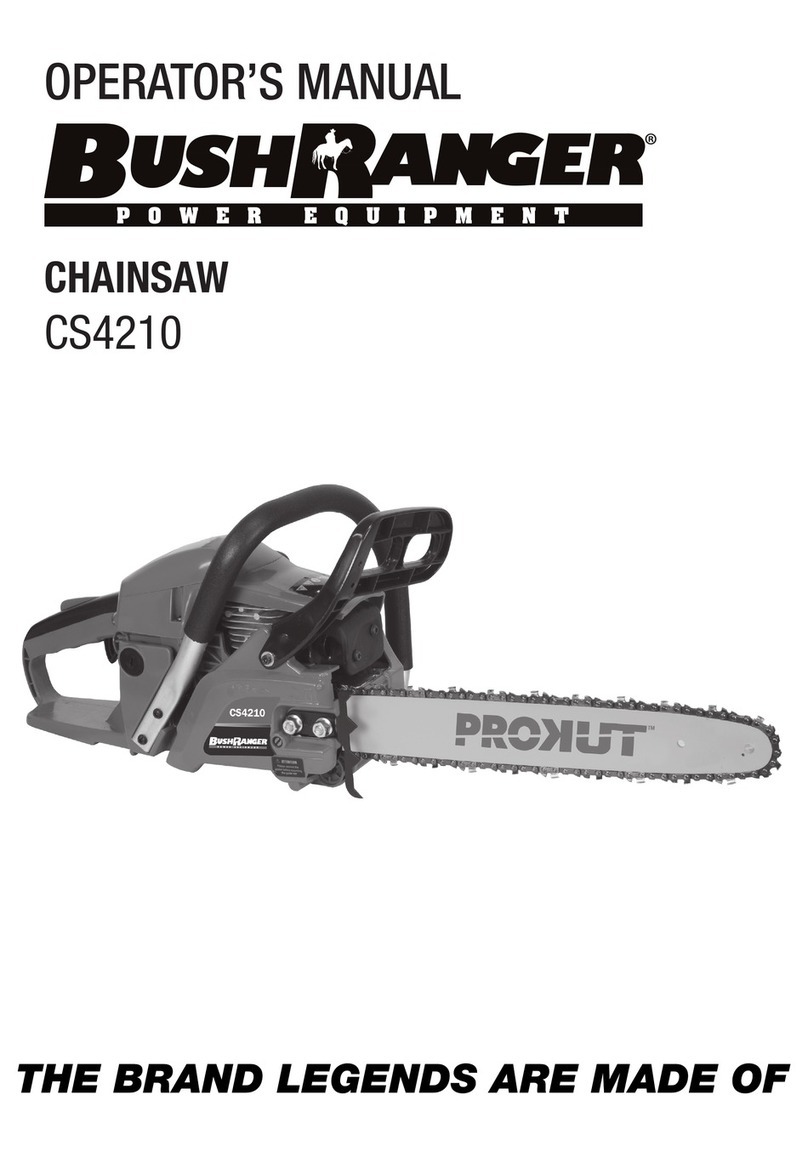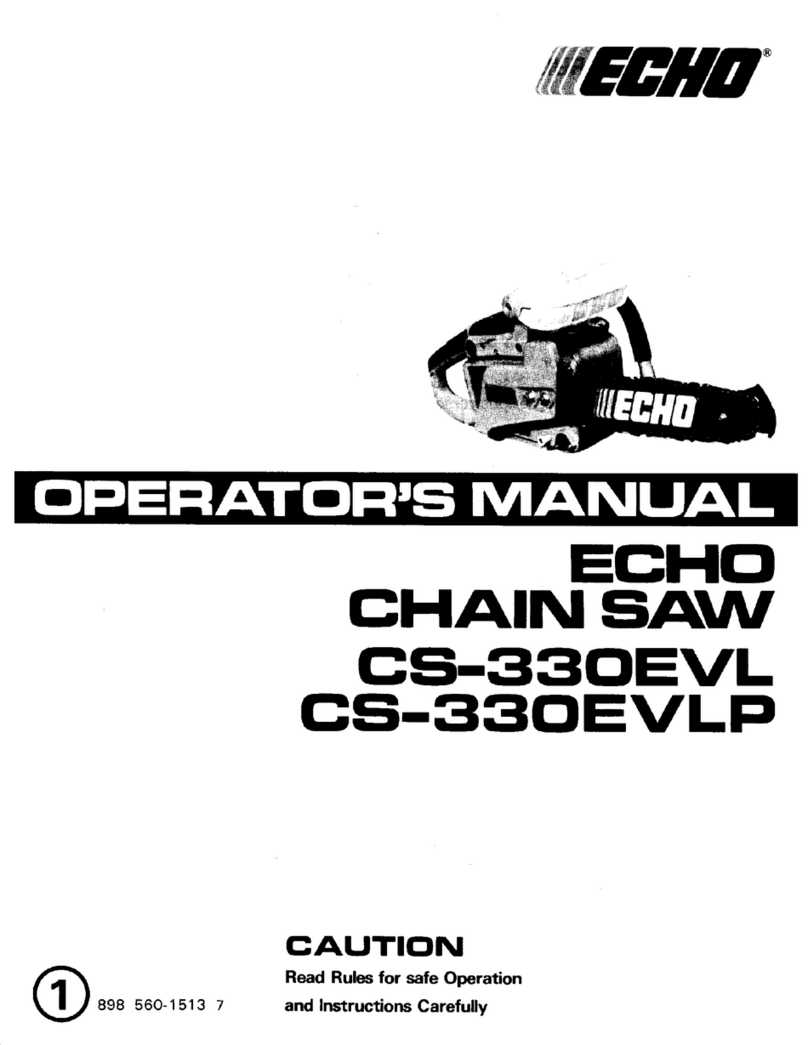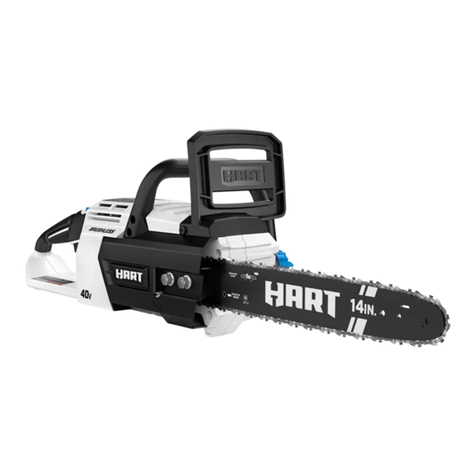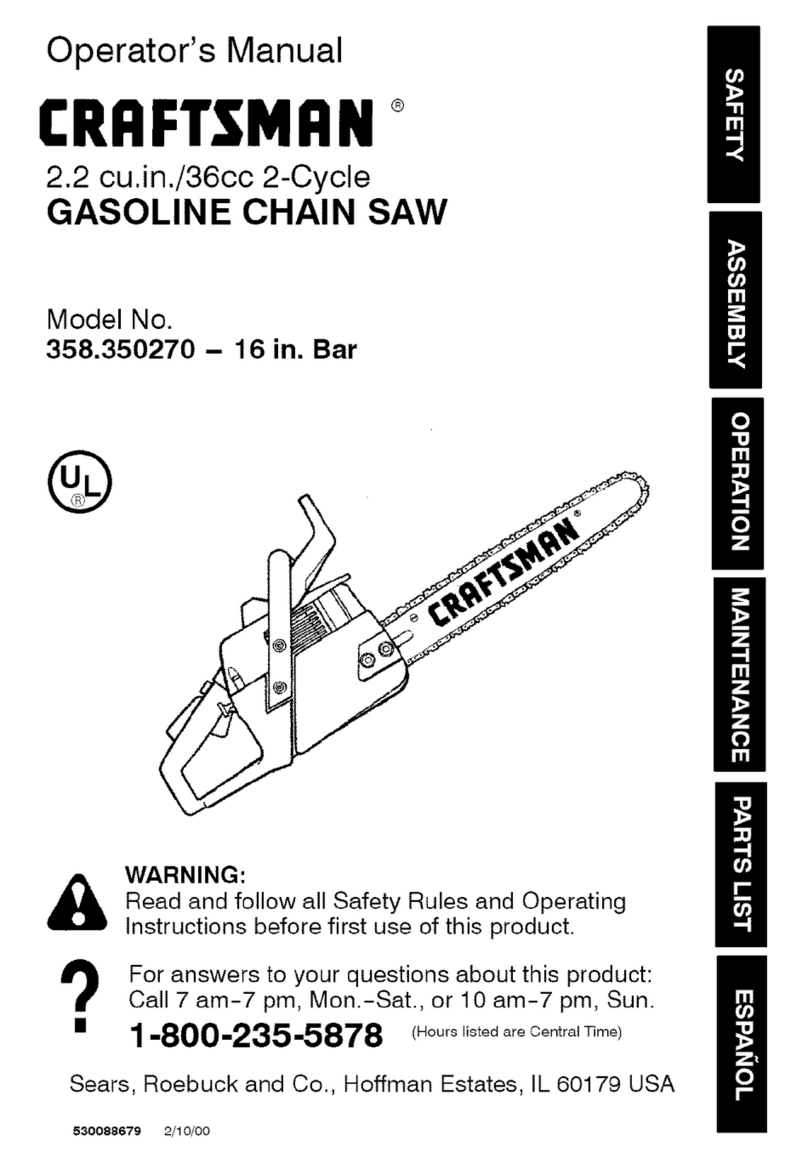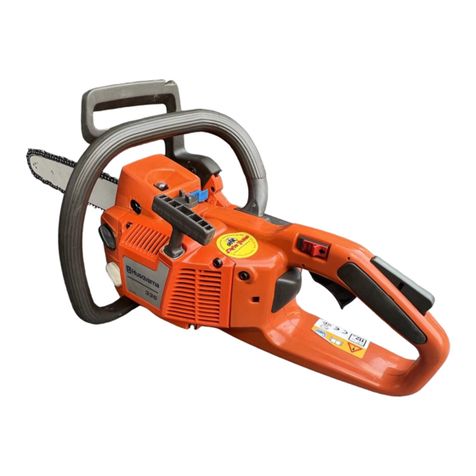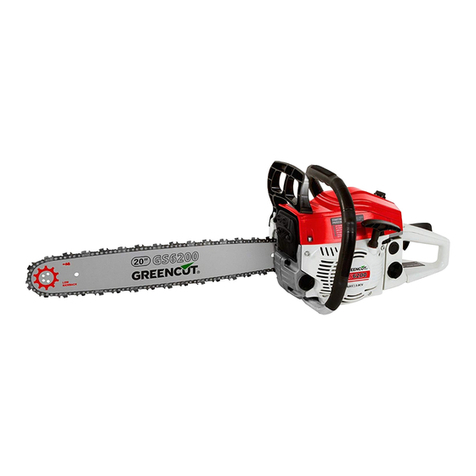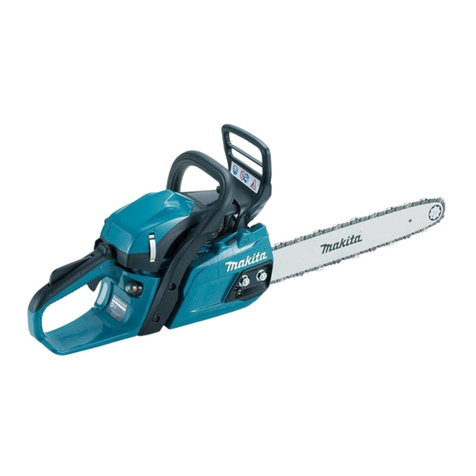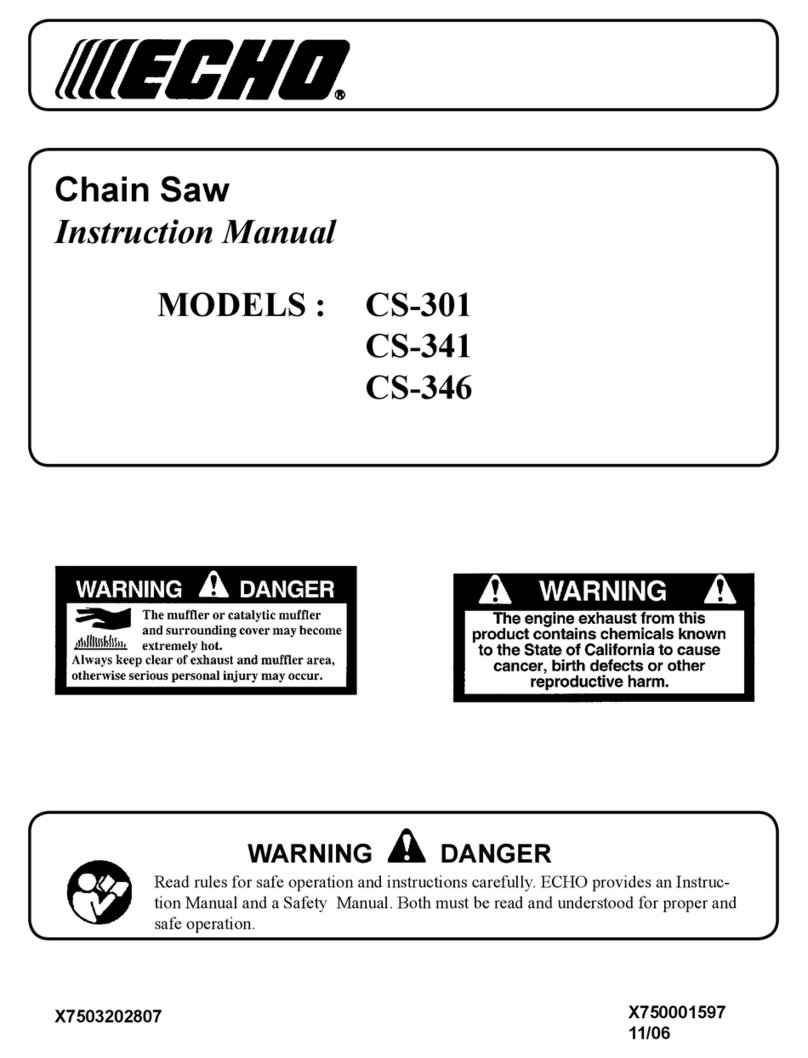
To reduce the risk of accidents and
injuries, always hold your saw firmly
with both hands: Right hand on the
control handle, even if you are left-
handed. To ensure safe control, wrap
your fingers tightly around both han‐
dles.
One-handed operation is particularly
dangerous, e.g. when cutting dry,
knotty and dead wood, the chain may
not enter the cut properly. The resul‐
tant reactive forces may cause the
saw to skate or bounce on the limb
and slide out of control. This increa‐
ses the risk of serious or even fatal
injury.
Use the tree surgery chainsaw with one hand
only:
–if two-handed cutting is not possible and
–if one hand is required for support during the
cut and
–if the saw is held firmly and
–if all parts of your body are clear of the cutting
attachment.
During one-handed cutting:
–never support yourself on the limb being cut
–never cut with the bar nose
–never attempt to hold falling limbs
Make sure you always have good balance and
secure footing. To avoid slipping, take special
care when the bark is wet.
In the event of impending danger or in an emer‐
gency, switch off the engine immediately – move
the Master Control lever in the direction of
STOP, 0 or †.
Never leave a running saw unattended.
Take special care in slippery conditions – damp,
snow, ice, on slopes, uneven ground and freshly
debarked logs.
Watch out for obstacles such as tree stumps,
roots and ditches which could cause you to trip
or stumble.
Do not work alone – keep within calling distance
of other persons trained in first aid who can pro‐
vide assistance in an emergency. Helpers at the
cutting site must also wear protective clothing
(hard hat) and stand well clear of the branches
being cut.
Be particularly alert and cautious when wearing
hearing protection because your ability to hear
warnings (shouts, alarms, etc.) is restricted.
To reduce the risk of accidents, take a break in
good time to avoid tiredness or exhaustion.
The dusts (e.g. sawdust), vapor and smoke pro‐
duced during operation may be dangerous to
health. If dust levels are very high, wear a suita‐
ble respirator.
When the engine is running: Note that the chain
continues to rotate for a short period after you let
go of the throttle trigger (flywheel effect).
To reduce the risk of fire, do not smoke while
operating or standing near your chainsaw. Note
that combustible fuel vapor may escape from the
fuel system.
Check the saw chain at regular short intervals
during operation or immediately if there is a
noticeable change in cutting behavior:
–Shut off the engine and wait until the chain
comes to a complete standstill.
–Check condition and proper mounting.
–Check sharpness.
Do not touch the chain while the engine is run‐
ning. If the chain becomes jammed by an
obstruction, switch off the engine immediately
before attempting to remove the obstruction –
risk of injury.
Always shut off the engine before leaving the
saw unattended.
Shut off the engine before changing the saw
chain. This avoids the risk of injury from the
engine starting unintentionally.
To reduce risk of fire, keep hot exhaust gases
and hot muffler away from easily combustible
materials (e.g. wood chips, bark, dry grass, fuel).
Mufflers with a catalytic converter can become
particularly hot.
Never operate your saw without proper chain
lubrication – check oil level regularly during oper‐
ation. Stop work immediately if the oil level is too
low and refill the oil tank – see also chapters on
"Filling Chain Oil Tank" and "Checking Chain
Lubrication".
If your saw is subjected to unusually high loads
for which it was not designed (e.g. heavy impact
or a fall), always check that it is in good condition
before continuing work – see also "Before Start‐
ing Work".
Check the fuel system in particular for leaks and
make sure the safety devices are working prop‐
erly. Do not continue operating your saw if it is
damaged. In case of doubt, have the unit
checked by your servicing dealer.
English 2 Safety Precautions
6 0458-599-0121-C
